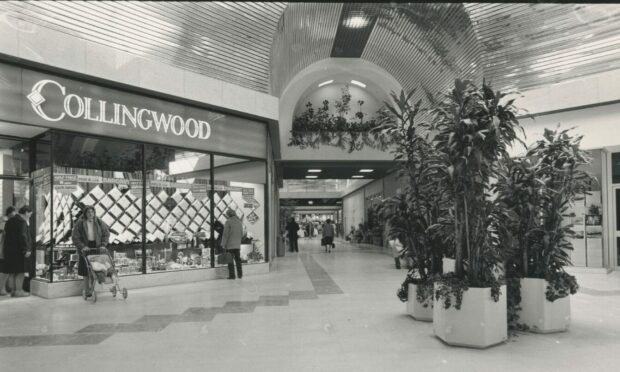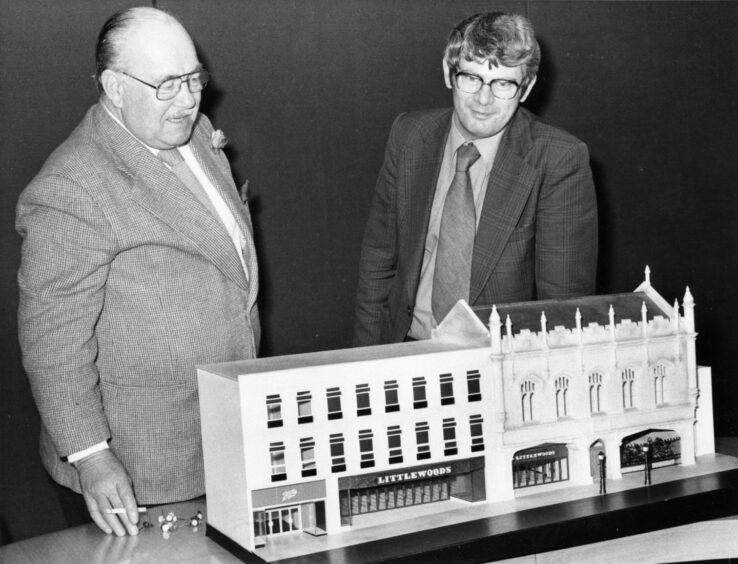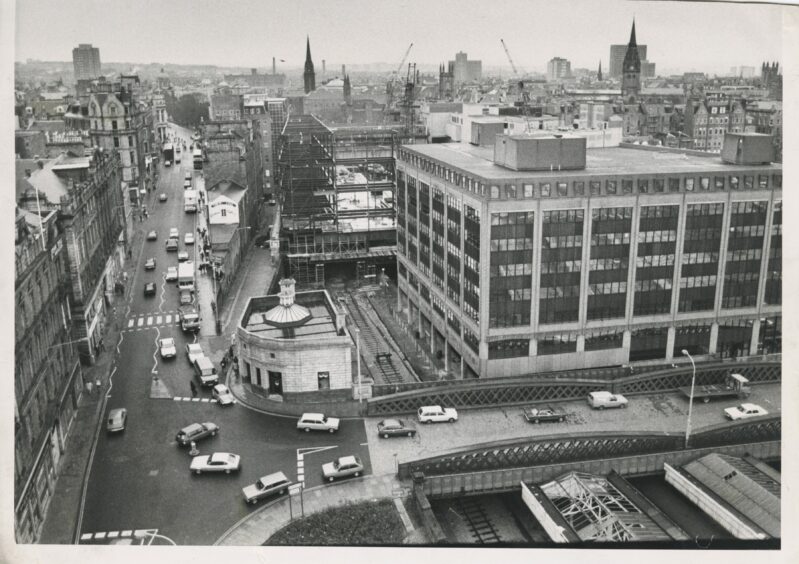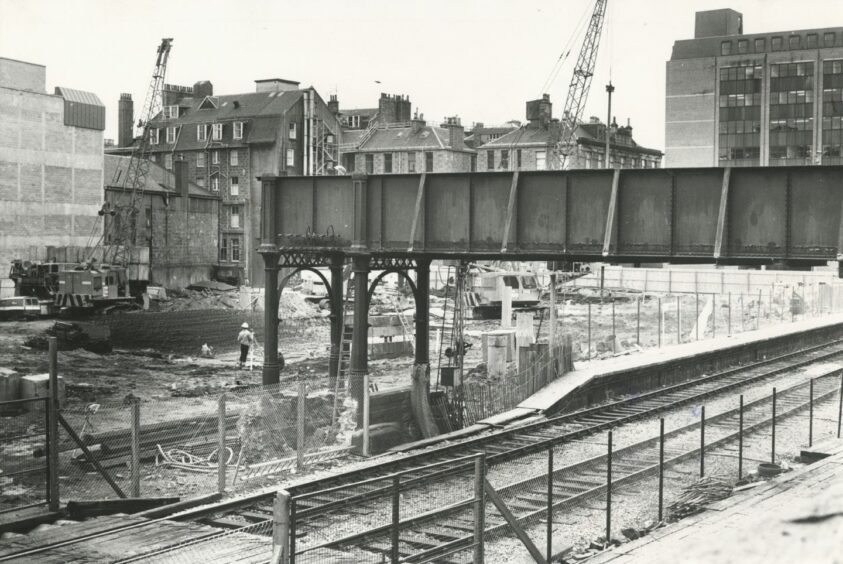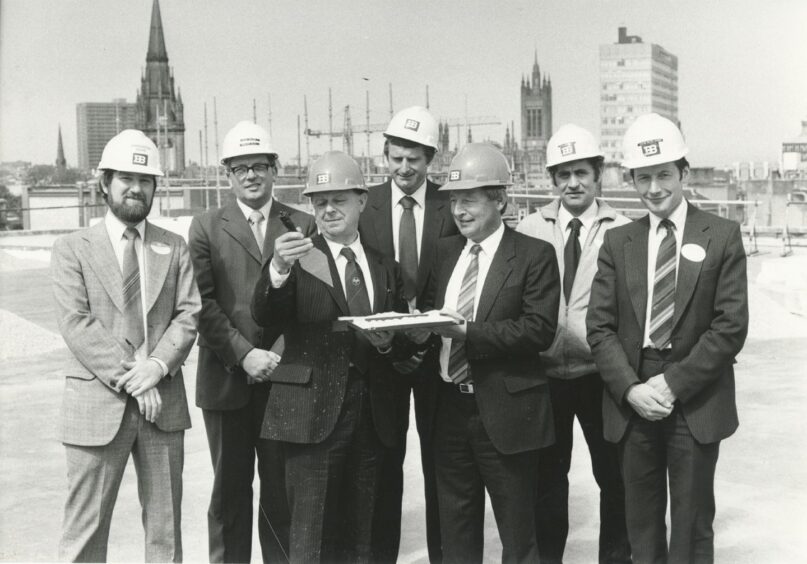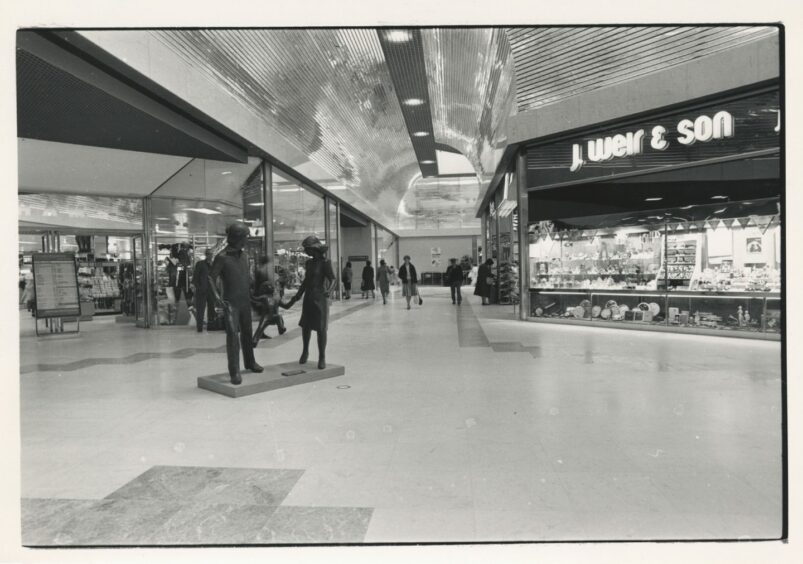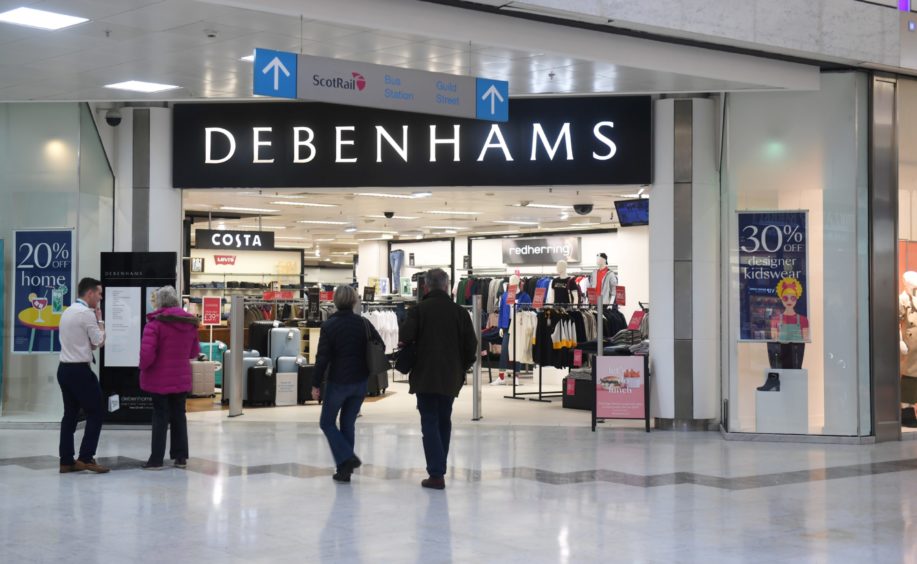It was one of the innovative retail projects that reached for the stars at the launch of a boom period for Aberdeen.
And some of the images which emerged, as construction began on the Trinity Centre in a city awash with new oil money, are the stuff of science fiction – with architects envisaging a sleek future back in the late 1970s and 1980s.
An Evening Express story, headlined City Centre Giant from 40 years ago, described how Norwich Union’s £20 million Union Street scheme was designed to offer shoppers an exciting shopping experience under one roof.
There was also space provided on the site for parking for 400 cars at ground level.
Such ambitious developments followed the discovery of the Forties Field and subsequent untapping of vast reserves of North Sea oil, which not only sparked a transformation of the Granite City as it rapidly became one of Europe’s energy capitals, but was the catalyst for a consumer boom.
The whole city landscape changed
The sky was the limit for such companies as Debenhams, which announced it was creating a store on the premises – and opened in a frenzy in 1984.
However, while there was positivity at the outset and a string of leading retailers opened shops at the Trinity site, it seems many people had forgotten one of the basic adages of business: what goes up must come down.
The template for ventures such as the Trinity Centre had been devised as far back as the late 1950s when construction of high-rise flats in Aberdeen made some bright sparks wonder: if we can do this in housing, why not in retail?
In 1963 Lord Provost John Graham talked about what he described as the “marvel of shops on stilts”, which he believed could herald “a specially interesting new chapter in the extraordinary history of Union Street“.
A prophet in his home city, he praised the work which had been done to install a 155ft-long girder, weighing 135 tons, which was designed to support seven shops above the railway line on the south side of Union Bridge.
He said: “This has been a very well thought-out exercise (the girder was assembled on the Beach Boulevard before being taken to the bridge on two giant 16-wheel trailers) and the finished job reflects well on the city.”
It did more than that. Until then, shops stood on their own and thrived or died on their own efforts.
But what about bringing myriad different retailers, from butchers and bakers to chemists and newsagents into the same place?
It was only as the years passed that various proposals were discussed and debated, modified and resubmitted, before the parts came together, along with the finance, for the establishment of a new shopping centre.
It would be located in the middle of the city with entrances on Union Street, Bridge Street and Guild Street and an underground walkway that led to the railway station.
Eventually, following lengthy consultation, the local authority and Norwich Union confirmed it would be named after the Trinity Hall building, the former headquarters of the Seven Incorporated Trades of Aberdeen.
And if it had been a protracted process, it was only a reminder that almost nothing happens quickly when it comes to planning decisions in Scotland.
However, belatedly, the Trinity Centre became a reality.
The shopping complex was created at a time when the Beach Ballroom remained a jewel in the city crown and Alex Ferguson was steering Aberdeen FC to unprecedented heights on the domestic and European stage.
The Press & Journal carried photographs of the work as the centre was gradually brought to fruition, with councillors expressing delight over the benefits of the venture.
But initial plans to open it in September 1984 were delayed because of issues surrounding Debenham’s fire and safety systems.
By this stage, the different firms in the building were already preparing for the tills to jingle as Christmas approached, so there was frustration at the two-week hold-up.
But finally, on October 11, contractors Balfour Beatty received the thumbs-up and a spokesman confirmed construction was complete.
The paper reported on how the Trinity base would “house around 26 other units” and revealed that “many had already been leased out after talks”.
But it added that the final touches and last coats of paint were still being applied in several places and confirmed that “the official completion date for the whole centre” had been pencilled in for October 31.
We might take these malls for granted in 2022 but in the 1980s, amid the swift expansion of the city, there was a tangible sense of excitement as staff at the prestigious Debenhams store got ready to welcome the public.
There were no shortage of customers, happy to turn up hours before it even unlocked its doors, and as many as 400 hardy souls queued for their chance to enter the spacious new shop prior to the 9am opening.
Those at the front of the line were rewarded for their efforts, with the first dozen people being treated to free glasses of champagne – and the fizz continued during a trading period bosses described as “phenomenal”.
General manager Frank di Lorenzo described the day’s business as “beyond all expectation”, with Aberdonians purchasing an eclectic selection of goods, dominated by children’s wear and young fashions: a trend that was carried on for the next few years, even as the Trinity Centre expanded its operations.
Two years after it opened, the venue had developed into a staple of Aberdeen society, particularly in the winter when it offered a reprieve from the cold weather and with easy access to trains for those who travelled in from Inverurie, Dyce, Stonehaven and other nearby communities.
And there was fresh anticipation when a major new retailer issued the advertising slogan: “You’ve Read the Book – Now See the Show” in 1991.
Something for everyone was promised
Just before Christmas, Argos was promoting the company’s thousands of items of new stock and offering bargain coupons in the P&J.
And staff at the superstore, which was divided into five departments, sent out the message: “Whether you want to choose at home from the catalogue or browse at leisure through the store, Argos takes care of it.”
It and other retailers did that for almost the next three decades.
But gradually, as internet shopping was born and city centres struggled, life grew tougher.
And nobody, not even the once-vaunted Debenhams, was immune.
It didn’t matter that the shop had been an integral part of Aberdeen life – at the heart of the Trinity Centre – when the news emerged the company was closing down all its department stores across Britain in December 2020.
An unholy combination of poor management, changing trends in shopping, rising inflation, the impact of austerity (and the oil and gas downturn) and the Covid pandemic were all cited as reasons for the gloomy tidings.
Yet that was no consolation to the thousands of workers who lost their jobs, often after decades of service, as the shops were stripped bare.
One of them, Dod Morrison, toiled for 23 years in Aberdeen and took some eerily poignant photographs of the premises before they were cleared.
The former stock movement assistant said simply after leaving for the last time: “It will be sadly missed as will be all my colleagues.”
And that feeling was echoed by so many others in the P&J Letters pages.
There’s still plenty of activity and action at the Trinity Centre as its staff strive to adapt to changing circumstances in a post-Covid world, where they are forced to contend with home shoppers buying goods with a quick click.
So it seems unlikely that anything will revive the exhilaration on customers’ faces as they rushed through these doors for the first time in their lives and popped the champagne corks in 1984.
Marie Wilson from Ellon, one of the early customers told the Evening Express in 1988: “Aberdeen is really moving with the times.
“We’ve got as much as anybody has and, hopefully, it is only going to get better in the future”.
Not even Mr Micawber would be optimistic enough to share that view today.
More like this:
Remembering the glory days and the lost shops of Aberdeen Market
John Lewis: Looking back at 32 years of memories at the flagship Aberdeen department store
